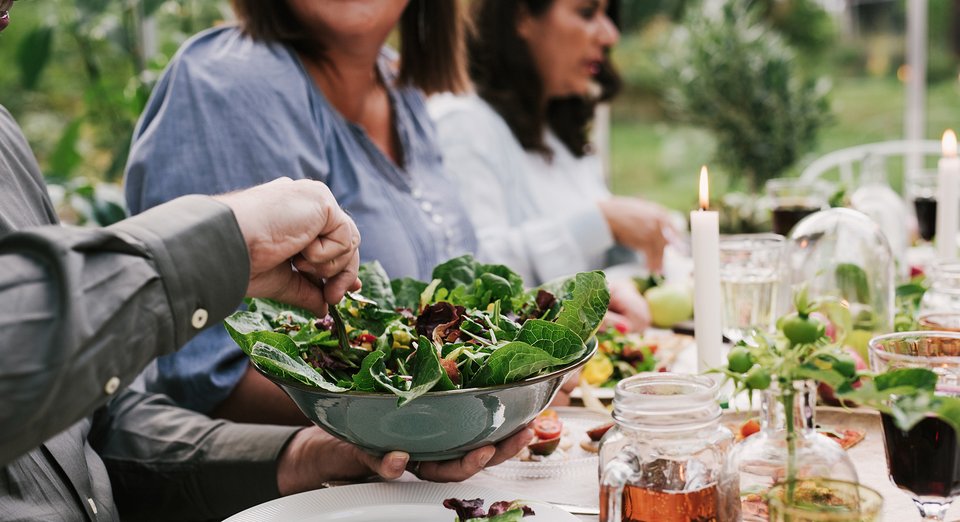
Time is running out in the fight against climate change, according to the latest World Climate Report. But people often forget this: What ends up on our plates is a major contributor. What schnitzel has to do with the climate and how you can protect the climate by making small changes when shopping and eating.
There are many ways to help protect the climate: Cycling instead of driving, opting for energy-saving electrical appliances or not turning up the heating unnecessarily. However, one everyday and very efficient option is often overlooked: our diet.
What we eat has a major impact on the environment and climate. Around a fifth of greenhouse gas emissions are caused by what we eat. According to the German Federal Centre for Nutrition, the average person eats 500 kilograms of food a year, producing around two tonnes of carbon dioxide. Around 45 per cent of this is generated during production from the field to the supermarket or discounter, the rest during purchasing, storage and processing.
The good news is that even small changes in our eating habits can make a significant overall contribution to climate and resource protection. Here are five tips that you can start with today.
Give up meat more often
According to a comprehensive study by Oxford University, those who eat less animal-based and more plant-based foods such as vegetables, potatoes, cereals and pulses make the greatest contribution to climate protection. Plant-based foods cause the fewest greenhouse gases (8 per cent), while animal products (meat, fish, milk) cause the most (44 per cent). This is because ruminants release large amounts of the greenhouse gas methane during the digestion of concentrated feed and a lot of energy is used for the production and import of concentrated feed.
According to a recent ifeu study (Institute for Energy and Environmental Research in Heidelberg), cattle and lamb perform particularly badly. For example, the production of one kilo of beef generates an average of 13.6 kilos ofCO2, chicken 5.5 kilos and pork 4.6 kilos. By comparison, the production of one kilo of carrots only releases 0.1 kilos ofCO2. This does not mean that meat is taboo in principle. Moderate consumption also makes a difference. If all German citizens ate only 300 to 600 grams of meat per week, as recommended by the German Nutrition Society (DGE), our diet-related greenhouse gas emissions would already be reduced by around nine per cent. Thanks to a growing range of vegan and meat substitute products - for example from REWE Bio + vegan or PENNY Food for future - it's not that difficult to fit in one or two veggie or vegan days a week, for example. What's more, both product ranges are completely climate-neutral.
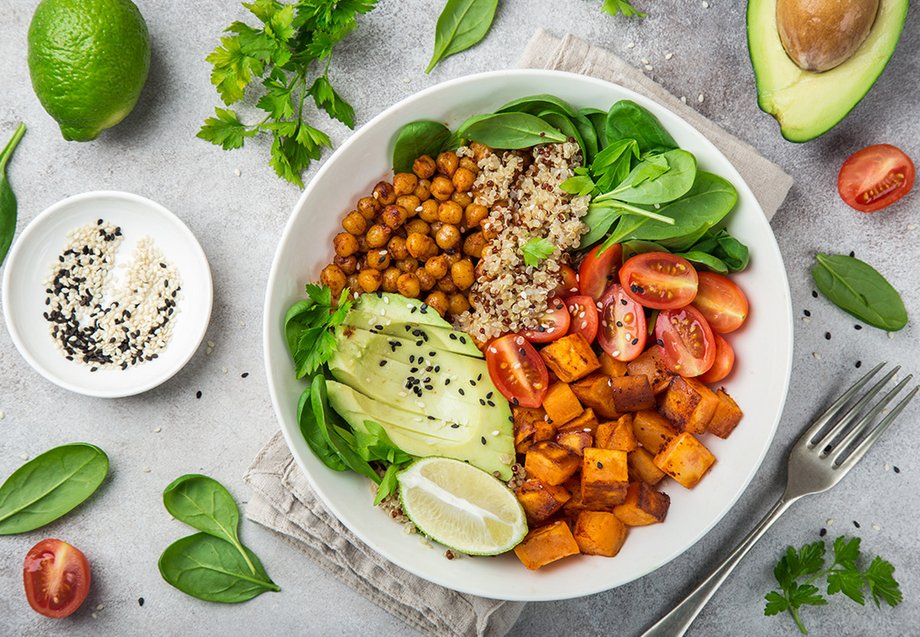 © Getty Images | Anna_Shepulova
© Getty Images | Anna_Shepulova
In the week from 15 to 19 August, the canteens at Cologne's Central locations will be offering more vegetarian and vegan dishes. Whether it's veggie bratwurst, vegetable lasagne or vegetarian cevapcici - this week you can try something new and leave your feedback here.
Butter from bread
Too many dairy products are also harmful. Thecarbon footprint of one kilo of butter is almost on a par with one kilo of beef. What makes butter so problematic for the climate is that around 18 litres of milk are required to produce one kilo. This in turn means that many cows have to be kept just for butter production. A lot of greenhouse gases are released during the production of the animal feed required. If you use vegetable margarine instead of butter completely or at least occasionally, you are protecting the climate.
As a rule of thumb, the more fat a dairy product contains, the more milk is needed to produce it. Incidentally, the ifeu study shows that plant-based milk is a good alternative to cow's milk: the production of milk from oats or spelt (0.3 kilos ofCO2) releases significantly lessCO2 than the production of cow's milk (1.5 kilos on average).
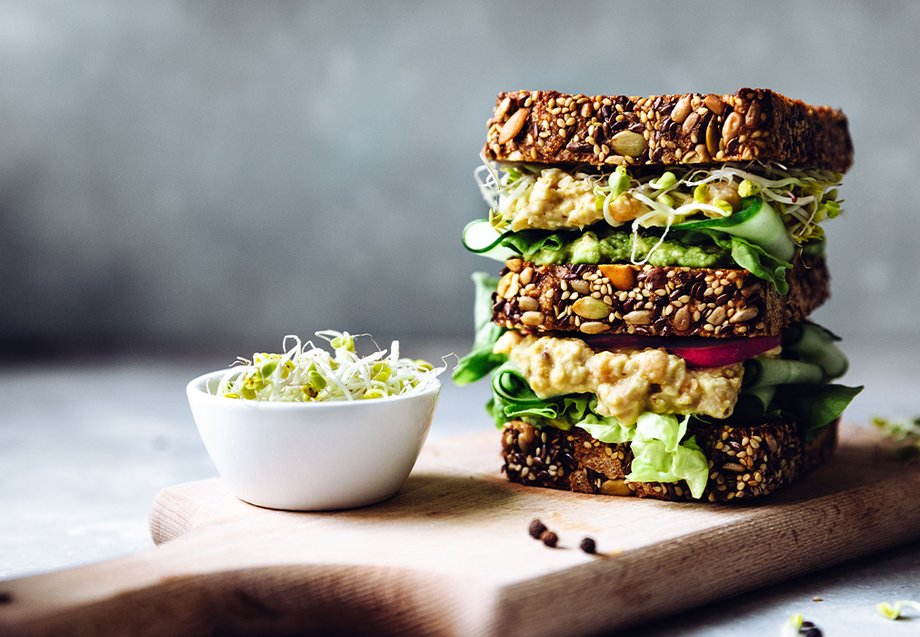 © Getty Images | alvarez
© Getty Images | alvarez
Regional and seasonal instead of global
"Eat with the seasons" is a good guiding principle for an environmentally friendly diet. After all, food is most climate-friendly when it is in season and does not have to be transported far. Emissions are many times higher when food is imported by plane than when it is transported by ship. A pineapple transported by air, for example, is around 25 times worse than the same fruit transported to Germany by ship (source: ifeu study). Seasonally harvested fruit and vegetables also have a far lower impact on the climate than plant foods that are grown out of season in heated greenhouses.
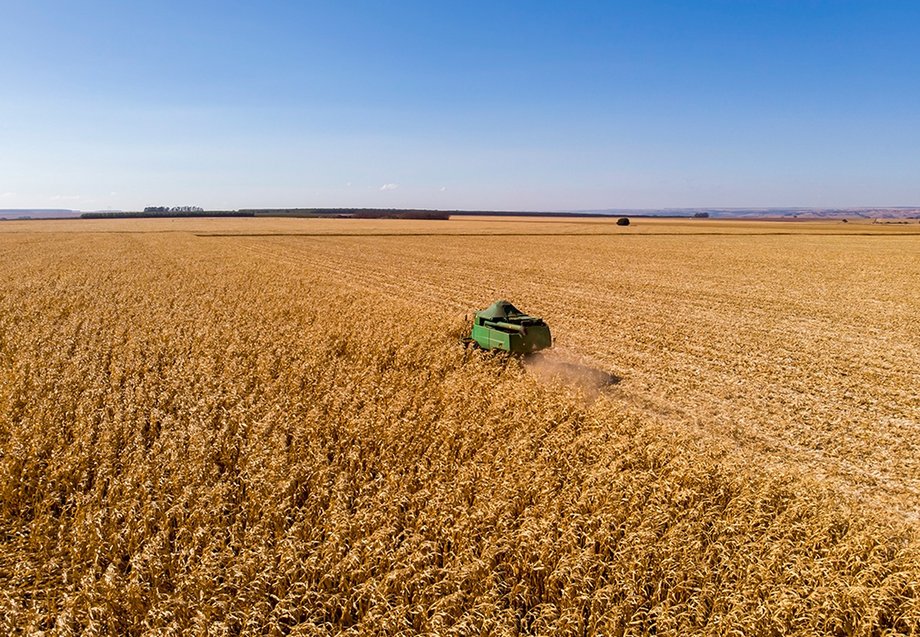 © Getty Images | wsfurlan
© Getty Images | wsfurlan
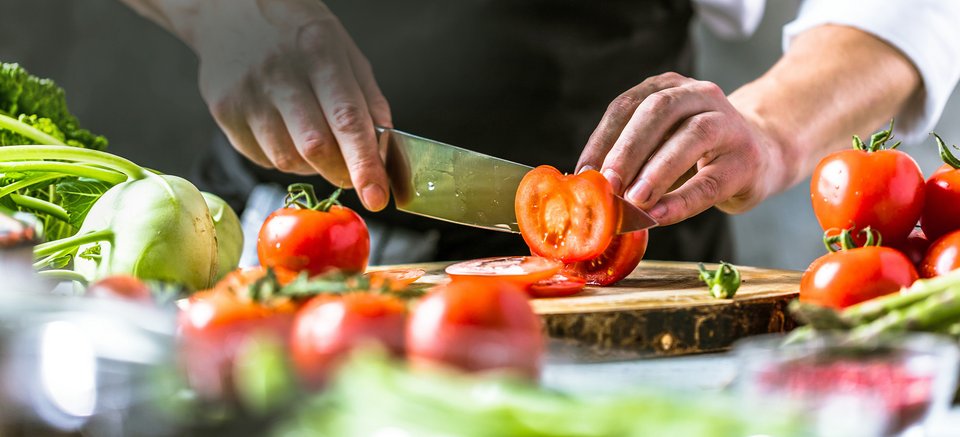
Tomatoes are a good example of how the production of food affects itscarbon footprint: If organic tomatoes are grown in a heated greenhouse in this country, around 9.2 kg ofCO2 is produced per kilogramme of tomatoes. With conventional production, the figure is as high as 9.3 kg. Specimens from unheated greenhouses consume around 2.3 kg per kilo. Seasonal tomatoes from the region perform best. They consume only 85 grams (conventional) or 35 grams (organic) ofCO2 per kilogramme. (Source: German Council for Sustainable Development)
Go organic more often
When it comes to resource consumption, organic products often perform better than conventionally produced food. This is because the absence of synthetic chemical pesticides and mineral fertilisers saves energy. In addition, the concentrated feed for animals rarely comes from overseas. The Thünen Institute has analysed many comparative scientific studies. The result: organically farmed soils store more carbon than conventionally farmed soils. Emissions of the climate-damaging nitrous oxide were on average 24 per cent lower. Buying organic food therefore protects the climate.
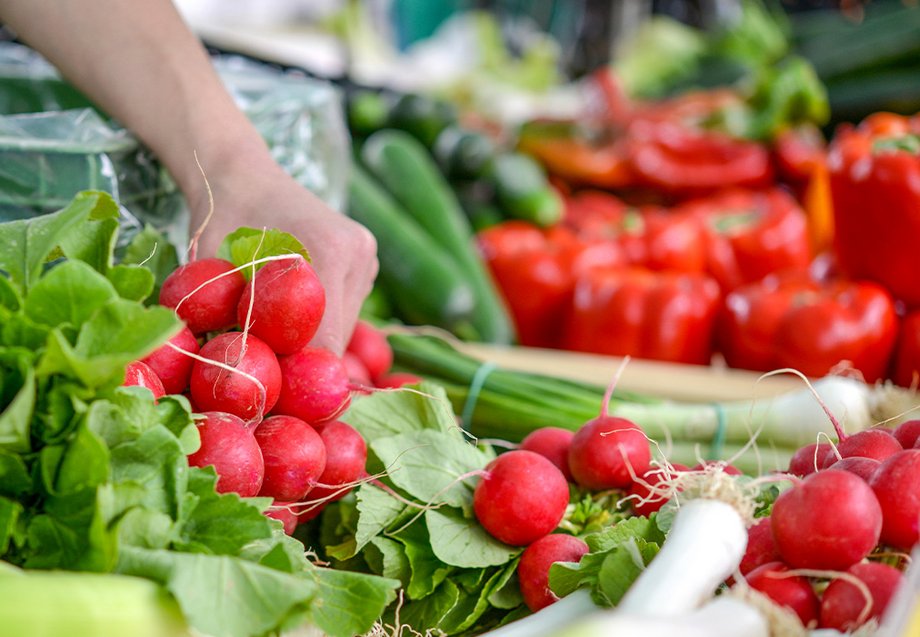 © Getty Images | Karl-Hendrik Tittel
© Getty Images | Karl-Hendrik Tittel
Packaged - less is also possible
The amount of packaging waste has risen steadily in recent years. In addition to its benefits, such as safe transport and protection against spoilage, packaging and its disposal have a negative impact on the climate. So buy food without packaging wherever possible and use reusable fresh fruit and vegetable nets. Avoid unnecessary disposable products. Carrier bags become more climate-friendly the more often they are reused. For packaged food, make sure that the packaging is recyclable. And throw it in the right bin so that it can be recycled.
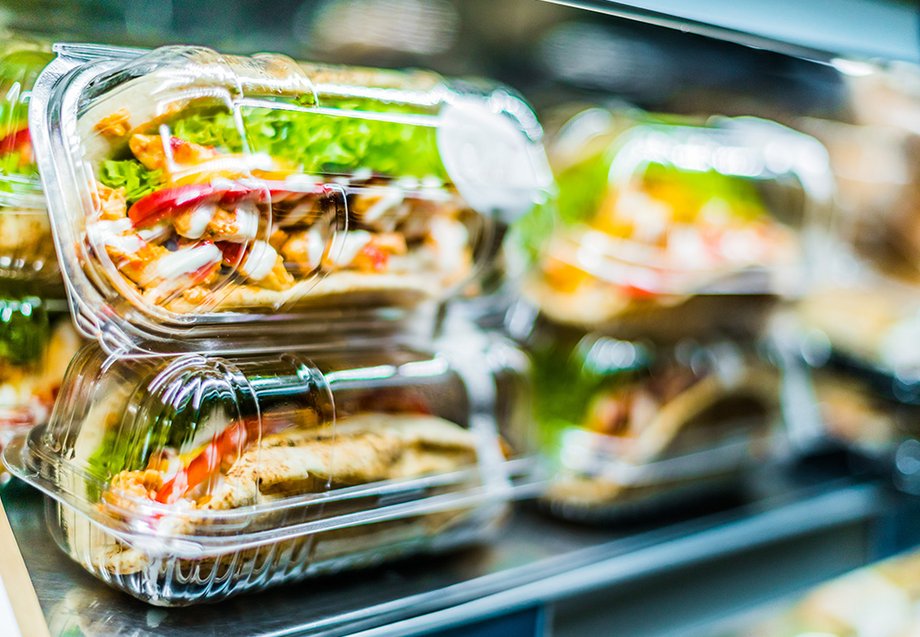 © Getty Images | onticelllo
© Getty Images | onticelllo
Avoid waste
Producing food consumes resources. If you throw it away, you could have saved on cultivation, irrigation, transport, packaging and much more. All the more tragic: eleven million tonnes of food end up as waste in Germany every year, 59 per cent of it in private households (source: bmel). A study by the Thünen Institute shows: Germany could reduce greenhouse gas emissions attributable to food consumption in Germany by 9.5 per cent compared to 2015. The prerequisite for this is halving food waste at retail and consumer level by 2030. What you can do: Plan your purchases in advance and shop consciously, store food properly, don't just go by the best-before date, but check for yourself whether food is still edible.
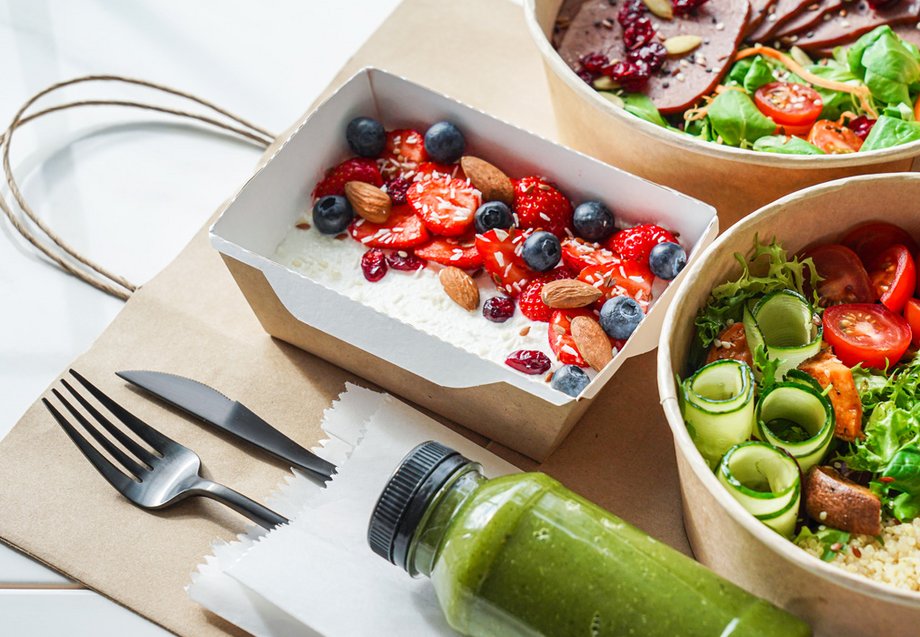 © Getty Images | insta_photos
© Getty Images | insta_photos
Take part now and support the Climate Challenge!
 Have you got the urge to switch to vegetarian or vegan alternatives more often? Then why not support REWE Group's Climate Challenge and save a lot ofCO2 together with your colleagues? Find out how here.
Have you got the urge to switch to vegetarian or vegan alternatives more often? Then why not support REWE Group's Climate Challenge and save a lot ofCO2 together with your colleagues? Find out how here.
